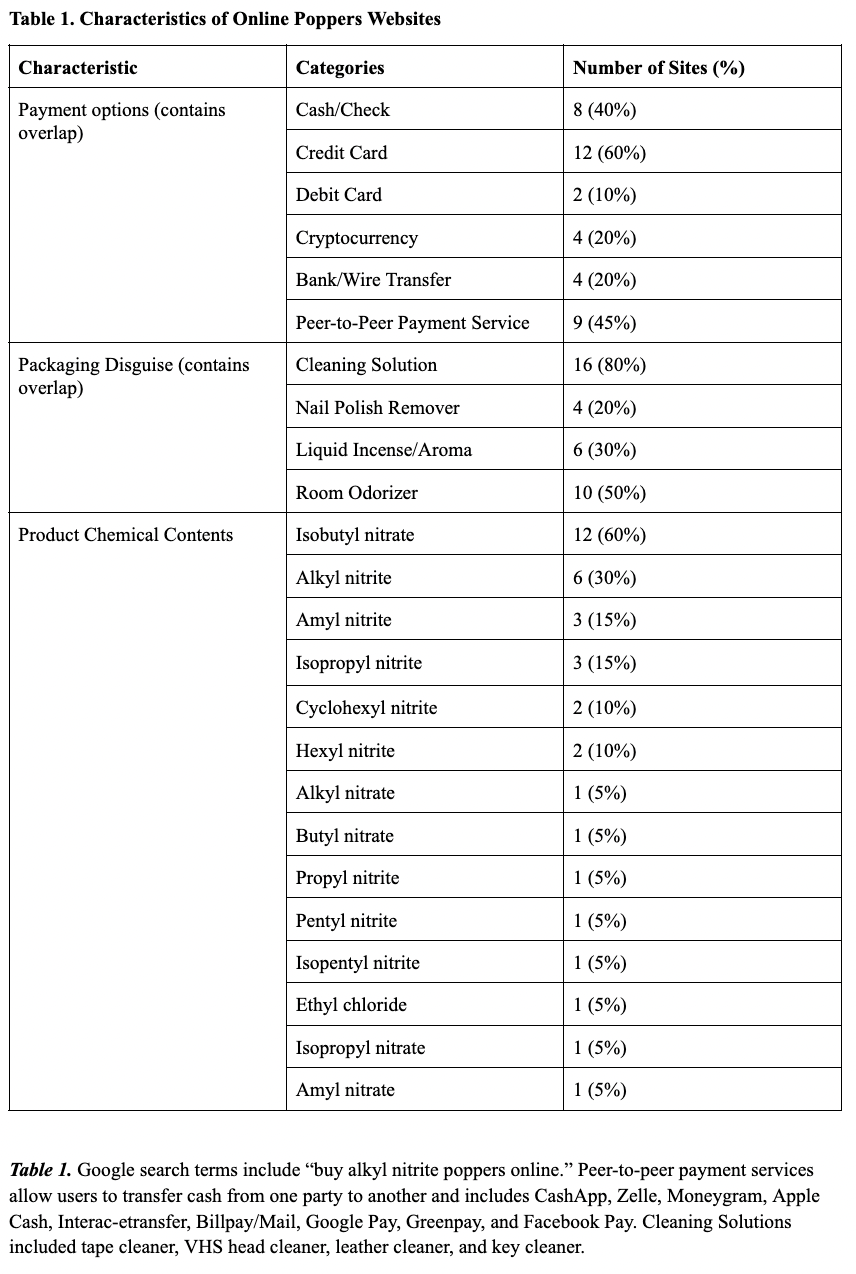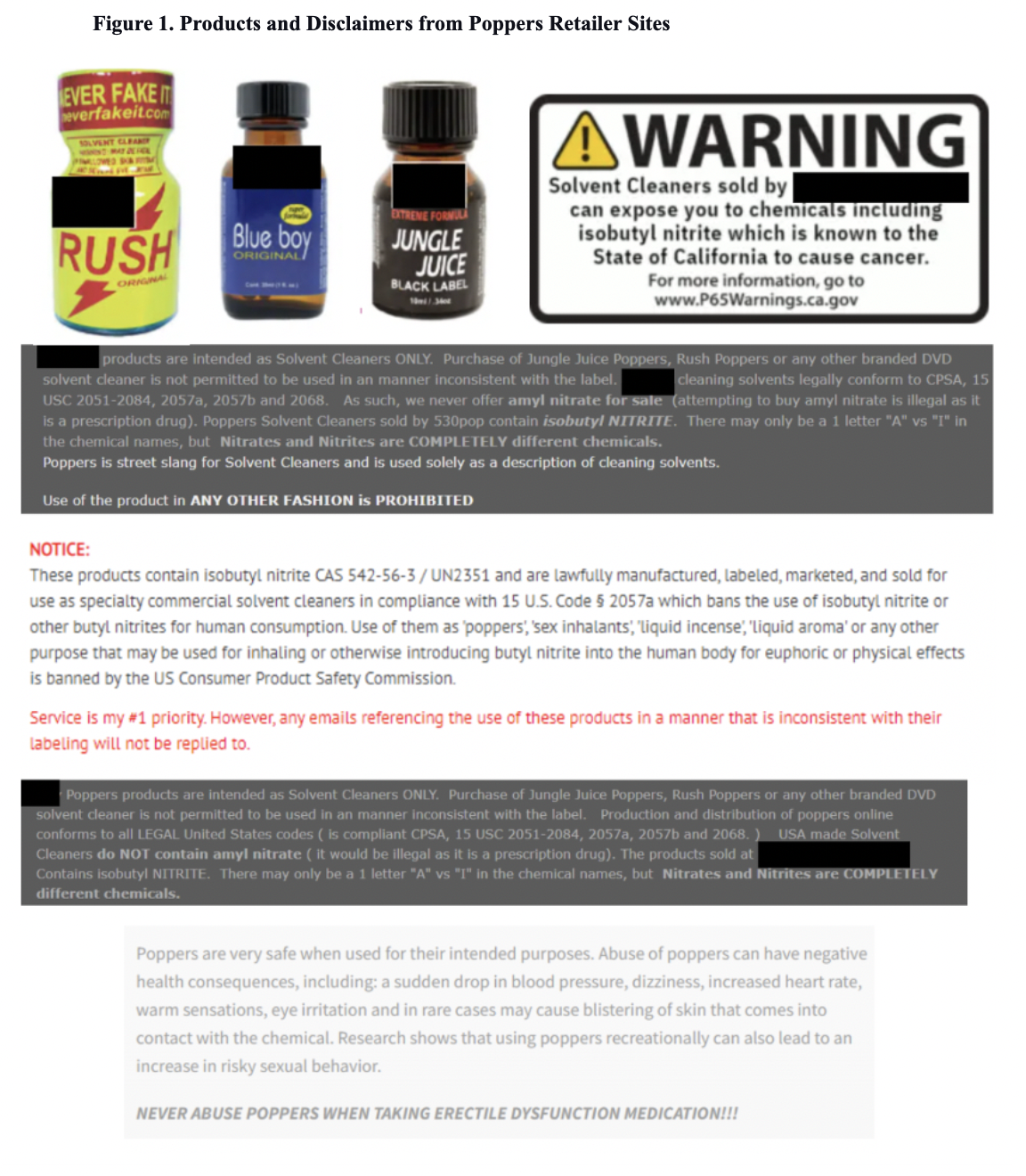Adolescent Medicine: Substance Use
Adolescent Medicine 2
4 - Analyzing the Ease of Online Access to Inhalant “Poppers” Drugs for Minors
Saturday, April 29, 2023
3:30 PM - 6:00 PM ET
Poster Number: 4
Publication Number: 4.2
Publication Number: 4.2
Mary O'Connor, Cohen Children's Medical Center, New City, NY, United States; Kara Sangiuolo, Cohen Children's Medical Center, Fairfield, CT, United States; Fiona P. Dubrosa, Cohen Children's Medical Center, New York, NY, United States; Ruth Milanaik, Cohen Children's Medical Center, Lake Success, NY, United States

Fiona P. Dubrosa, BS BA (she/her/hers)
Visiting Scholar
Cohen Children's Medical Center
New York, New York, United States
Presenting Author(s)
Background: The dangerous recreational inhalant drug known as “poppers” has experienced a major resurgence in recent years. Known for their euphoria-inducing properties and relaxation effect on involuntary smooth muscles, users sniff the vapors from the bottle to experience a high. Due to a ban on the inhalation of alkyl nitrites, poppers are nefariously packaged in bottles disguising them as items for legal use and are sold online. The ease of accessing poppers for minors online is currently unknown.
Objective: To examine the disguising and accessibility of poppers online to identify risks to pediatric populations.
Design/Methods: Publicly available online poppers retail websites (OPR) were identified and assessed (Google search queries). The following data were collected: 1) vendor (name, URL); 2) age confirmation; 3) product characteristics (e.g., packaging/disguise, chemical makeup); 4) payment methods (e.g., credit, debit, cryptocurrency); 5) delivery/pickup options; 6) disclaimer/legal information. Descriptive analysis was conducted in R.
Results: Twenty OPR that shipped to the US were analyzed. A total of 85% of OPR prompted users to confirm they were 18+ to enter the site; 100% did not ask for a birthdate or other age confirmation. Before purchasing, 15% of OPR attempted to verify legal age by asking users to confirm they were of legal age. 45% of OPR mentioned policies on selling to minors. Packaging disguises included: cleaning solution (n=16), nail polish remover (n=4), liquid incense/aroma (n=6), and room odorizers (n=10). Poppers most frequently contained isobutyl nitrate (60%, n=12) (Table 1). 25% of OPR only accepted credit cards, while 75% accepted non-traceable forms of payment. 100% of OPR offered delivery; 0% offered pickup. 75% of OPR provided disclaimers regarding proper intended use and toxicity warnings and 65% provided legal information (Figure 1).
Conclusion(s): The majority of OPR are readily accessible to minors, lacking age verification and restriction features. An alarming 75% of OPR required no formal age verification at any stage of the purchasing process, and the use of untraceable payment options makes these products especially easy for minors to purchase and obtain via delivery. All chemicals used in poppers are illegal for human consumption in the US, and the dangerous marketing strategies and misleading packaging is a transparent means of circumventing laws against these products’ consumption. Our findings reveal the need for enforceable legislation that strongly regulates online vendors to protect pediatric populations and increased education on the dangers of poppers.


